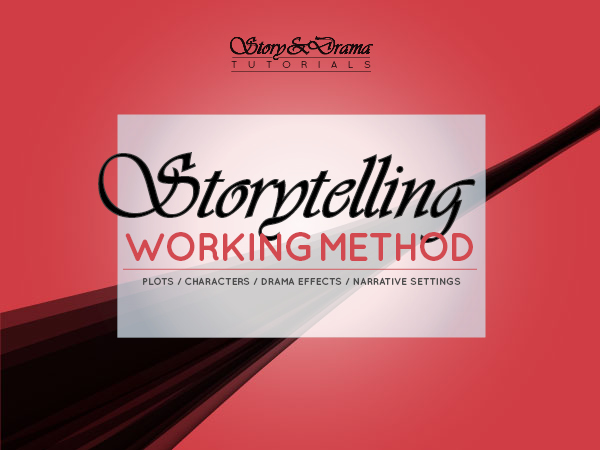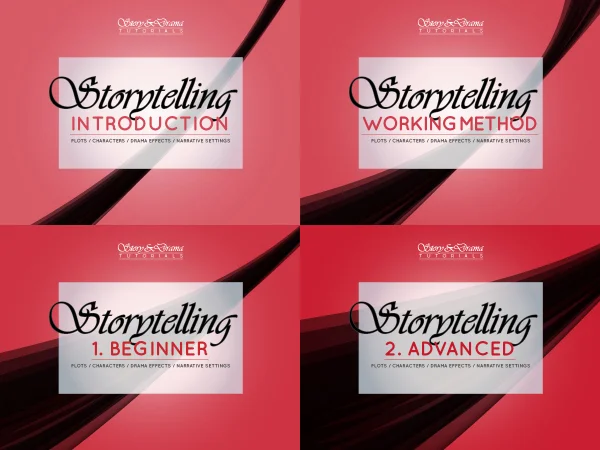 |
|
|
PDF, 42 pages
|
Free!
|
| Read the Free storytelling working method | |
This page is an abstract from our Storytelling Working Method PDF.
Summary
- Presentation + download free PDF
- Part 1.1. Steps of work and working documents
- Part 1.2. Story Project setup
- Part 1.3. Story development
- Part 2. Brainstorm and research
- Part 3. Plots and characters development
- Part 4. Writing the final script
- Part 5. Sending or making
Part 1.1. Steps of work and working documents
Steps of work
Working out a story is a complex task, because the story is a complex object.
To build a story, we have to make plots and characters, to arrange them into structures, and from that write a complete script with scenes, descriptions, dialogs.
If we start writing the final script from nothing, the result might be too poor to satisfy our audience. If we start writing a big project without a method, we take the risk not to know what to start with, to get lost in the work documents, to mix and confuse the versions, to lose track of some ideas.
So, to make sure we will obtain our script in the end, all along the process we need to organize the work in steps and to elaborate some documents progressively:
- 1/ Project setup
- 2/ Brainstorm and Research
- 3/ Pitch, plots and characters development
- 4/ Writing / rewriting
- 5/ Making
From first idea to specifications From documentation to pitch From pitch to plots and characters From synopsis to treatment to script Publisher, director, producer, drawer…
Final work:
- Book,
- comics,
- show,
- album,
- movie,
- event,
- etc
(Note: the sizes of the document are indicative, they will vary according to our project. Of course we do not write a long-feature movie or an epic novel as we write a short-story, a narrative poem, a song, a one-page comic, etc. What is important here is the proportions and the idea that there’s a step-by-step, progressive development.)
Working documents
Firstly, there are 2 documents that we will probably want to keep and feed during the whole creative process:
The Board journal
The Board journal is a daily tool to develop, transform, store our work: each time we work on our project, we take notes of the date and time and keep track of our thoughts, artistic intentions, philosophical considerations, plans, problems, scenes we have in mind, fragments of dialogs that came to us in our sleep, etc. Later, in 2 weeks, 3 months, 1 year, we will find very useful having kept those precious notes.
In this journal we might also note our doubts, hesitations, projects, lists of characters and sketches of plots that are candidates to belong to the final story, and all other work data.
One important point: Do not worry about the quality, it is just research, the Journal is our secret laboratory. Accept everything that comes, we will make cuts and selections later. Everything can bring good ideas – bad elements are useful to define the good ones, by contrast.
The Bible
The “Bible” (nothing to do with the sacred book, we do not have to crucify Jesus a second time to make a good Bible) is a reference document that allows us to store all the data, descriptions and lists about the story elements we are sure of: the plots, characters, scenes we finished building, the characters and their relationships, and all the other elements that will belong for sure to the final story.
It is more structured than the Journal:
- In the Journal, we elaborate the materials.
- In the Bible, we keep only what is finished and ready to be transformed into a synopsis and finally a script.
Special offer – 4 scenario tutorials for only $30
Story&Drama offers you 4 scenario tutorials for $30.
Download them all immediately!
 |
|
4 PDF
|